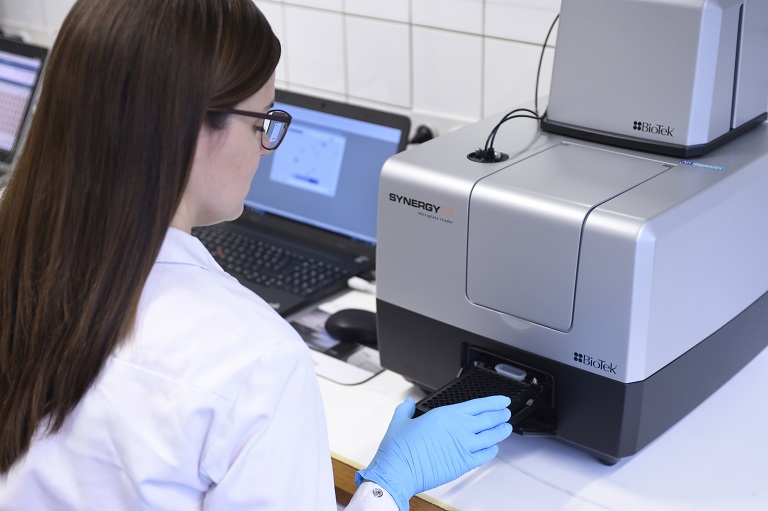In January 2020, the Final DDI Guidance for Industry was published. Similarly to the draft guidance, there are separate documents for in vitro and clinical drug interaction studies, which are to be used systemically to assess DDI potential. We’ll focus here on conducting in vitro DDI studies according the In Vitro Drug Interaction Studies – Cytochrome P450 Enzyme- and Transporter-Mediated Drug Interactions Guidance.
While the 2017 published draft version went through relatively major changes, as discussed in our previous blog post, the content of the 2020 final guidance has remained rather similar. The final guidance could be considered as an improved version, with reworded and clarified instructions, not bringing in too many actual new requirements as such. In general, the guidance on in vitro DDI studies is all about how to manage the risk for DDIs. From the in vitro experimental point of view, it is outlined how the in vitro studies should be conducted and the results used to determine potential clinical DDIs and to inform future clinical DDI studies.
Notable is that the final DDI guidance now clearly encourages to initiate the metabolism mediated DDI studies before the first human studies. Newly mentioned additional enzymes to be considered responsible for drug metabolism, if the metabolism is not CYP mediated, include aldehyde oxidase (AO), carboxylesterase (CES) and sulfotransferases (SULTs). However, it must be kept in mind that it may be necessary to investigate also other enzymes, which are not listed. Importantly, when using individual human recombinant CYP enzymes in phenotyping studies, it is recommended to evaluate the enzyme activity in comparison to liver (relative activity factors). Also, the recommendations for evaluating the role of metabolites in DDIs has been improved.
Enzyme inhibition study recommendations remained rather similar with the draft guidance. Regarding data analysis and interpretation of enzyme inhibition, use of unbound maximal plasma concentrations at steady state in the calculations has been further clarified, in line with the earlier draft guidance. When planning in vitro assays, one should consider that it is now recommended to determine the non-specific binding especially of highly lipophilic compounds. In addition, the inhibition kinetics determination for reversible inhibitors is more defined and it is suggested that IC50/2 could be used for estimating Ki, if the substrate concentration is at Km.
For the enzyme induction studies a good amount of clarifying information has been included, especially for data analysis and interpretation in the Fold change method. Importantly, it is clarified that hepatic exposure could be calculated to be e.g. 30-fold of mean unbound maximal steady-state concentration at therapeutic dose. The drug is considered as an inducer not only when there is a more than two-fold change of CYP mRNA expression, but when there is a concentration dependent increase in the mRNA levels as well. Also, less than two-fold result should be considered negative only when it is less than 20% of the corresponding positive control result. The interpretation is now very much in line with the EMA DDI guidance (2012) for the Basic method. Evaluation of the results individually for each donor is highlighted and similarly with enzyme inhibition studies, using maximal unbound plasma concentrations at steady state in the equations is clarified. It is recommended to evaluate first CYP1A2, CYP2B6 and CYP3A4, since they are induced via different nuclear receptors. If CYP3A4 enzyme is induced and the results indicate a need for a clinical DDI study, the induction of CYP2C enzymes should be evaluated. In addition, the importance of considering the unbound drug concentration, non-specific binding and measuring the concentrations in the incubation medium is encouraged.
For the transporter mediated DDI studies, several points have been enriched with more detailed descriptions. Important point to consider is the recommendation that sufficient test compound total recovery should be demonstrated for both, transporter substrate and inhibitor studies. For the transporter substrate studies of hepatic uptake transporters, it is now recommended to consider compound’s properties, which may affect the importance of active hepatic uptake. Data analysis and interpretation of efflux transporter inhibition assays cover also the metabolites and parenterally administered drugs. When investigating OATP1B1/3 inhibition, pre-incubation may be considered to cover time-dependent inhibition. Only one recommended cut-off value for renal transporter inhibition is given, instead of the previously mentioned two different values for OAT/OCTs and MATEs. Using inside-out membrane vesicles for evaluating efflux transporter inhibition is clarified with a recommendation to use control vesicles for comparisons.
Taken together, because of the final guidance no major changes are needed to in vitro studies, if those have been so far conducted with good scientific practise. It is good to keep in mind that high quality CROs have scientific expertise for giving advices and what points to consider, when planning and conducting regulatory compliant in vitro DDI assays. In case you are interested to hear more about the topic, you might want to check out FDA’s recent webinar discussing the updates on their DDI guidance.
Written by
Miia Kovalainen

